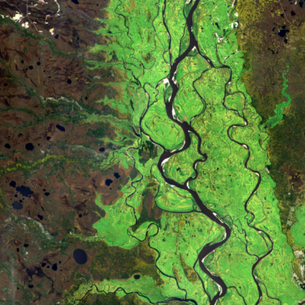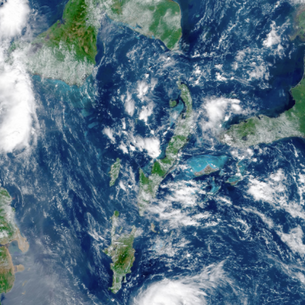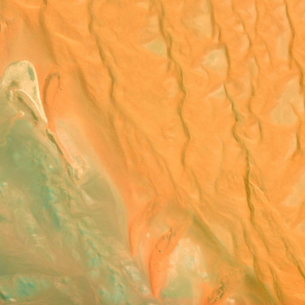A remote sensing system has six components to gather valuable data. In an era of technological advancements, remote sensing technologies have emerged as invaluable tools for understanding and monitoring the Earth’s surface. These innovative technologies enable us to gather data by sensing the energy emitted, or reflected, by a geographical area. Whether for scientific research, environmental monitoring, or urban planning, remote sensing data analysis provides crucial insights for improving life on our planet.
At the heart of this groundbreaking field lies a framework comprising of six essential components. In this piece, we’ll define these six components, explore their practical applications, and demonstrate examples of where to find this data.
The Six Components of a Remote Sensing System
1. Light Source
At the core of remote sensing lies a light source, typically the sun. However, some sensors work differently. There is a difference between an active sensor and a passive sensor. A passive sensor measures energy that is naturally available to it. Whereas an active sensor, creates its own light source. For example, a radar satellite sends a signal down to the Earth’s surface and waits for it to bounce back up to receive the signal back, and the deformations in those signals allow it to generate an image. That is an active sensor. With passive sensors, the light energy illuminates the Earth’s surface, providing the necessary radiation for the remote sensing process. This energy is either emitted or reflected by the target, forming the basis for data collection. This is the first key to a remote sensing system.
2. Radiation and the Atmosphere
Radiation from the energy source interacts with the Earth’s atmosphere. Various atmospheric components, such as water vapour and gases, can alter the incoming energy. Understanding these interactions is crucial for accurate data collection. Remote sensing scientists often correct atmospheric effects to obtain reliable information, but the base is a core component of a remote sensing system.
3. Target
The third element of a remote sensing system is the target. The target, also known as the Earth’s surface, is the area of interest in remote sensing. It could be a forest, a city, a glacier, or other geographical features. The properties of the target, such as its reflectance, emissivity, and temperature, determine the type of data collected and the sensors used.
4. Recording of Energy by the Sensor
Sensors play a pivotal role in remote sensing by capturing the energy emitted or reflected by the target. These sensors are often mounted on satellites, aircraft, or ground-based platforms. SkyWatch has specialized knowledge in satellite technology, and through our product EarthCache, users looking to acquire satellite imagery can choose from an array of data outputs captured by various sensor types. Different sensors are designed to capture specific parts of the electromagnetic spectrum, such as visible light, infrared, or microwave radiation.
5. Processing
Once the sensor records the energy, the collected data must be processed. This step involves correcting for various factors like atmospheric interference, sensor characteristics, and geometric distortions. The processed data is then converted into images or other forms suitable for analysis.
6. Analysis
The final component involves the interpretation and analysis of the remote sensing data. This stage can range from basic visualization to advanced techniques like image classification, change detection, and quantitative measurements. Researchers and analysts use this valuable information for a multitude of applications.

Practical Applications of Remote Sensing Data
Remote sensing data has a myriad of practical applications across various fields:
Environmental Monitoring
Remote sensing helps monitor environmental changes, such as deforestation, land degradation, and natural disasters. It aids in tracking climate patterns, assessing pollution levels, and conserving biodiversity.
Agriculture
Farmers use remote sensing data to optimize crop management, assess soil health, and monitor crop health. This technology assists in precision agriculture, leading to increased productivity and sustainability.
Urban Planning
City planners rely on remote sensing to analyze land use, urban sprawl, and infrastructure development. This data aids in efficient city management and identifying areas prone to hazards.
Disaster Management
During natural disasters like hurricanes, earthquakes, and wildfires, remote sensing provides critical information for emergency response efforts. It assists in damage assessment and disaster preparedness.



Where to Access A Remote Sensing System
Accessing a remote sensing system (aka data) has become increasingly convenient:
Government Agencies
Many government agencies, such as NASA, the European Space Agency (ESA), and the United States Geological Survey (USGS), provide access to a wealth of remote sensing data. These agencies maintain extensive archives of satellite imagery and related data.
Commercial Providers & Marketplaces
Several commercial companies offer remote sensing data and services for various applications. Examples include companies like Maxar, Airbus, and Planet Labs, which provide high-resolution satellite imagery and analytics solutions.
SkyWatch is an example of an aggregator for satellite data. Our console, EarthCache, makes purchasing data from the industry’s top providers easy and affordable. You can get the same data from commercial providers but with more flexibility and variety.
Commercial use cases can vary across different industries. Some unique examples include real estate and AgriTech. These are two completely different business models, but both use remote sensing data to predict trends in the future. In real estate, for example, we’ve had customers gather satellite data to measure shorelines in a coastal region to predict its investment value. By understanding if the shoreline would weaken over time, they could gather enough information to decipher if it would deteriorate, allowing investors to make an informed decision.
In AgriTech, we’ve worked with customers with a humanitarian mission to reduce food insecurity. Please read the details of our partnership with Farmdar here, but in short, using a variety of remote sensing technologies, Farmdar is able to tackle food waste and insecurity in Pakistan head-on.
Online Databases
Numerous online platforms provide access to remote sensing data and tools for analysis. Platforms like Google Earth Engine and the Copernicus Open Access Hub offer user-friendly interfaces and a vast data collection.
In conclusion, remote sensing has revolutionized our ability to observe and understand the Earth’s surface. Its six key components, from energy sources to data analysis, form a comprehensive system that enables us to collect and interpret valuable information. With practical applications spanning environmental monitoring, agriculture, urban planning, and disaster management, remote sensing data plays an integral role in addressing some of the most pressing challenges of our time. Accessible through government agencies, commercial providers, and online databases, this data empowers researchers, policymakers, and industries to make informed decisions for a sustainable future.





